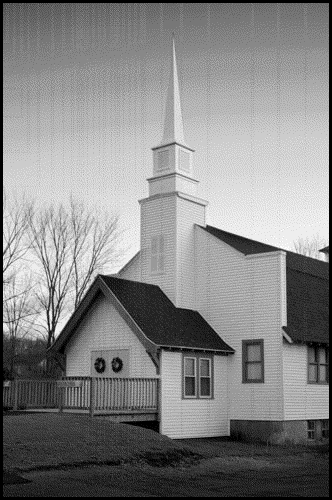The Revolution
A Novel
Carolyn Cooke
(Knopf)

It's your typical New England boy's prep school of the sixties: white, all-male, teaching "values." You remember values:
- God turned his back on the class and wrote slowly in chalk on the blackboard, "Are we not drawn onward we few drawn onward to new era."
This particular truth turns out to be a palindrome: you can read it forward or backward. A little awkward, but it tells us something about God and the Goode School and the way they operated public vs private schools fifty years ago.
The nearby public school is called (ouch) Wilde High. Carole goes there. She's black, but through a clerical error she gets admitted to Goode. Their one and only girl; their one and only black. Not entirely welcome ... by God. "Over my dead body," he is quoted as saying. Turns out to be true.
By the time of her last year, Carole's senior project is to make paintings of all the headmasters of Goode. She calls the art project "the Verenable Heads." These heads ... well, they definitely are not black; nor are they girls. What's the phrase? Dead White Males?
Carole makes them very traditional, really: "Each rendered in a yearbook-style black and white, except for some canny work she had done with the eyes, every pair a different color --- blue, green, brown, yellow, gray and red." Red eyes? There's that color business again.
God's picture is there too. It is not unflattering. But the question comes from her fellow students: "If you are interested in black power, Carole, why didn't you invent an Afro-feminist way of painting, rather than reusing and perverting the traditional, European portrait techniques?"
"The European canon is all I know," Carole says. Goode enough.
- During the ceremony, Carole and several accomplices pulled the portraits off the walls and took them into the quadrangle and set them on fire ... Carole later claimed that the fire was part of the project --- an investigation of authorship and authority, the ultimate freedom of the creator, ending in "a heap of burning images."
These fifteen stories are nicely hung together by surprises like this, and by the weird characters: Goddard Byrd, Carole, Heck Hellman (he went to Goode; he drowns early on; we find out how and why on the last pages of the book).
There's Heck's wife ... or widow ... Mei Mei. There's EV, Mei Mei's anorexic daughter, who is involved with a young man named Pilgrim (those names!) And Father Reiss who gets caught with his pants down. Even though he had "hit on" EV the year before, she found that she rather liked it. She watches him give his resignation speech from the pulpit, and she watches with regret. She observes that he is not a "crapulous old moralist in a robe --- he looked like a movie star."
Revolutionary Women is filled with these screwy people with screwy names, and it's a great deal of fun, hard to set aside, puts one in mind of other New England writers, although not necessarily Emerson or Hawthorne.
One night EV's boyfriend Pilgrim gets invited over to play in the front seat of Mei Mei's car (now we know we are in Cheever/Updike territory). And it is not initiated by Pilgrim, but by mum. (Her name is pronounced, we are given to believe, "me - me.") It starts with a kiss, in which, she muses, "There was nothing exploratory or sensory."
- It was all transmission, no reception: he might have been having a convulsion in my face.
"This was all over very quickly, almost before I understood how minor was my role," she says. Nice phrasing. The words might apply to the reader. It certainly applies to these odd Pilgrims. Like Pilgrim. Or Mei Mei. Or God. Or God.
The other one, that is.